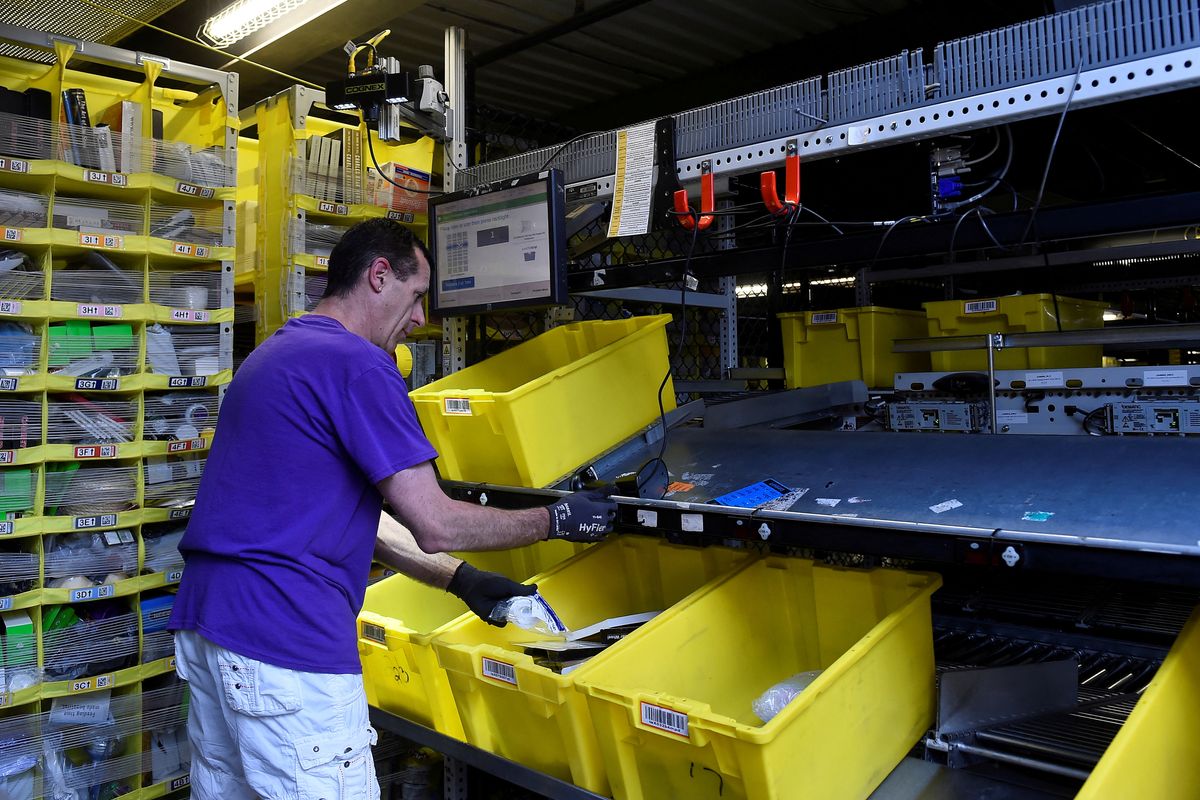Amazon puts warehouse robots to the test
Last week, Amazon began testing Agility-made humanoid robots in some of its US warehouses.

A few minutes every morning is all you need.
Stay up to date on the world's Headlines and Human Stories. It's fun, it's factual, it's fluff-free.
The backstory: Over the past few years, Amazon has been bringing more and more automated and robotics tools into its services. In its warehouses, the company has already introduced robots to help with the customer order processes. These robots have been relatively simple in design: cart-shaped robots or just basic robotic arms to do straightforward tasks like moving inventory. Most of the robots also work in their own areas, away from human employees. It’s said that these robots can both enhance employee safety and make the employee work experience better overall. The idea is to limit the repetitive activities that workers do for the sake of limiting injuries.
There have been reports, though, of higher injury rates in Amazon's robotic warehouses than in warehouses without these robots. Amazon says this is a misinterpretation of data.
More recently: Last year, the Sparrow arm robot was introduced, leading to worker concerns about job security. Also, in 2022, Amazon invested part of its US$1 billion Industrial Innovation Fund in a startup called Agility Robotics, looking to continue expanding its robotic solutions. There are currently over 750,000 robots used by Amazon.
The development: Last week, Amazon began testing Agility-made humanoid robots in some of its US warehouses. The bipedal robot is called “Digit,” and it has arms and legs so that it can grab, lift and move packages like a human does. At the moment, it’s just moving empty tote boxes. Amazon says that this move is for “freeing up employees” to make orders more up to par for customers.
Digit is made to work in spaces that were designed for humans better than some of the other robots Amazon has used. But, many unions and other groups are worried that this could be the first step in trying to replace a big chunk of Amazon’s human workforce altogether. Responding to these worries, Amazon says that these robots actually create more jobs – especially higher-skilled ones because these robots need to be developed and maintained. Amazon is also currently testing another technology called Sequoia, which can help sort inventory into containers for employees.
Key comments:
"People are so central to the fulfillment process,” Amazon Robotics' chief technologist, Tye Brady, told reporters. “The ability to think at a higher level, the ability to diagnose problems."
"Digit can move, grasp, and handle items in spaces and corners of warehouses in novel ways,” Amazon said in an announcement on its website. "Our initial use for this technology will be to help employees with tote recycling, a highly repetitive process of picking up and moving empty totes once inventory has been completely picked out of them."
"Amazon's automation is [a] head-first race to job losses. We've already seen hundreds of jobs disappear to it in fulfilment centres," said Stuart Richards, an organizer for the UK trade union GMB.




Comments ()